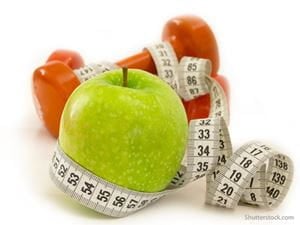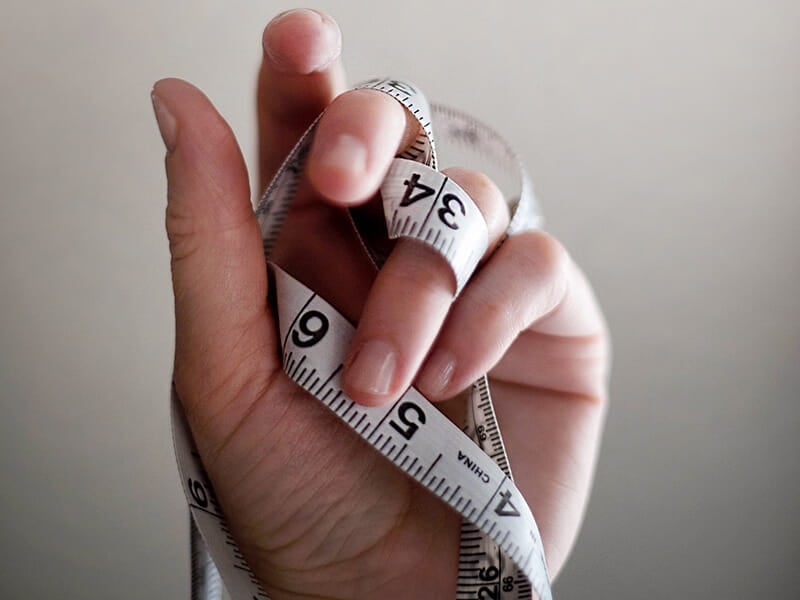
"Am I eating the right food?" "Is this how to exercise correctly?" "Does stress affect my health?"
All of these questions are common when it comes to figuring out how to be at a healthy weight. There is so much information out there that it can get pretty confusing. When it comes to belly fat, there is no difference! A ton of conflicting bits of information can hold you back from losing weight. It might be time to be open and honest with yourself to figure out what actions you are doing that aren't based in fact.
If you are at a standpoint where you cannot get rid of the belly fat, analyze your diet with these 8 tips to see what you may be doing wrong.
The situation:
You’re eating enough protein, but not the right kind.
What that has to do with belly fat:
Lean protein curbs unnecessary noshing by helping you feel fuller and builds lean muscle that burns calories even when you’re not exercising, says Marina Chaparro, MPH, RDN, a spokesperson for the Academy of Nutrition and Dietetics. Most of us meet our daily protein requirements, but we’re not always getting it from lean sources like fish, chicken, turkey, and vegetarian sources like beans and legumes. Instead, we’re picking red meat and cheeses.
What to do about it:
Focus on lean proteins and aim to eat about 1 gram of protein per day for every 2.2 pounds you weigh, says Chaparro. (A 145-pound woman would need roughly 66 grams.) Get plenty of soluble fiber too. For every daily 10-gram increase, people reduced their visceral fat by 3.7 percent over five years in a study in Obesity. That fat loss increased to 7.4 percent when they added in moderate activity. Some good soluble fiber sources: steel cut oatmeal, beans, cruciferous vegetables and fruit.
The situation:
Your fitness routine is lopsided, either all about cardio or all about strength training.
What that has to do with belly fat:
Studies that pit the two against each other have come to conflicting conclusions, with some saying time in the cardio area is more important than the weight room and vice versa. But a combination of strength training and cardio gets rid of the most belly fat, found a large review of the research.
What to do about it:
Build a fitness routine around both, and make sure it includes a couple of high-intensity interval (HIIT) sessions per week—research shows that HIIT is particularly effective at melting belly fat. Running is a great HIIT option, but high intensity doesn’t have to mean high impact. You can do an effective HIIT workout on more joint-friendly machines like the elliptical, stationary bike or rower. (If you do want to do your intervals on the treadmill, though, we’ve got a trick for that).
The situation:
You’re doing cardio and strength training to burn fat all over your body, but in the meantime, your core routine is the standard plank, held for a longtime.
What that has to do with belly fat:
We love planks, and so do fitness experts, because they strengthen the muscles deep in your core that help support your spine. But a static plank (i.e., just holding steady, on your hands or forearms) should be one of many ab moves in your arsenal—not the only one. By adding movement to your plank, you become less stable, and your abs have to work harder to maintain your balance. So once those abs are revealed, they’re more toned. Focus on reps over time— Jessica Matthews, American Council on Exercise (ACE) certified personal trainer and assistant professor of exercise science at Miramar College, says 30 seconds with good form is all you need, and a study in the Journal of Strength and Conditioning found that repeated holds for as little as 10 seconds are still beneficial.
What to do about it:
Do shorter planks, focusing on versions that include movement to challenge your core more. (We’ve got 15 ideas here.) Two more of Matthews’ favorite ab moves: The wood chop, and its reverse, the hay barreler. And don’t discount much-maligned crunches. It’s true that they work fewer overall muscles than planks and they’re not recommended for people with lower back issues, but research funded by ACE found that they effectively work your six-pack muscles (crunches even beat other moves like boat pose, bicycle crunches and, yes, the standard plank, when it came to activating upper abs).
The situation:
You’ve got an autoimmune condition.
What that has to do with belly fat:
A lot of medications have weight gain as a potential side effect, but corticosteroids like prednisone (used to treat arthritis, multiple sclerosis and more) and cortisone (used for arthritis, ulcerative colitis, among other conditions) lead to pounds in your stomach, specifically, says Michael Jensen, MD, an endocrinologist and obesity expert at the Mayo Clinic in Minnesota. They’re often used to treat asthma too.
What to do about it:
Ask your doctor if there are other medication options the two of you haven’t discussed. If they say that corticosteroids are it, there is some good news: Weight gained from those meds usually isn’t any harder to take off than weight you put on for other reasons, says Jensen, which means diet and exercise should help.
The situation:
You’ve cleared your cabinets of anything that isn’t low-fat.
What that has to do with belly fat:
Many low-fat processed foods are high in sugar, and you might not know that sugar makes you pack on pounds in themidsection specifically. But equally important is the fact that certain fats—the mono- and polyunsaturated kinds—can actually help you lose abdominal fat, says Chaparro. A diet that’s rich in monosaturated fatty acids (MUFAs) can also preventweight from collecting in your middle in the first place.
What to do about it:
Eat more poly- and monounsaturated fats in foods like nuts, olives and olive oil, says Chaparro. Even if you go overboard (they still have calories, after all), polyunsaturated fatty acids (PUFAs) are more likely to be stored as lean tissue instead of fat, suggests research in Diabetes.
The situation:
Your days are jam-packed, and there isn’t always time for breakfast
What that has to do with belly fat:
Skipping meals doesn’t just slow down your metabolism—research in mice suggests it can lead to weight gain in your stomach, specifically.
What to do about it:
Aim to eat every few hours to keep your metabolism revved up.
The situation:
Between work and home (and every other thing you’re responsible for), you’re stressed.
What that has to do with belly fat:
Stress increases cortisol levels, and cortisol likes to store weight in your stomach, says Jensen. (Researchers aren’t sure why.) It could also slow down your metabolism. When stressed and non-stressed women ate the same high-fat meal, the harried ones burned fewer calories at rest afterward, found a study in Biological Psychiatry. Finally, if your stress is affecting your sleep, you may be overeating without even realizing it—women who got just four hours of sleep ate 300 extra calories the next day in one study.
What to do about it:
We’re not recommending revamping your life just for a slim stomach—these tips are good for your overall well-being. If you can disconnect from work once you leave the office, do it—any mental health expert will tell you that you need time away from your smartphone to decompress. In a pinch, try one of these seven ways to de-stress in under an hour. As for sleep, if job worries are keeping you up, we’ve got tips to help you switch out of work mode and go to bed.
The situation:
You’re through menopause, but now you’ve got this extra weight in your midsection.
What that has to do with belly fat:
When your estrogen levels drop, the fat cells in your belly rev up their ability to remove fat from your bloodstream and store it before you can work it off, says Jensen.
What to do about it:
Get moving. It’s easier to gain weight after menopause, butresearch suggests it’s also easier to lose it. Light physical activity like gardening and walking has a more powerful impact on belly fat in post-menopausal women than it does in younger women, according to research presented at the annual meeting of the North American Menopause Society.
When struggling with belly fat, it can leave you frustrated and helpless. Take a look at your diet and see what you may need to restructure so that you can kick the extra flab! Be honest with yourself and you will be at the body you want in no time.

